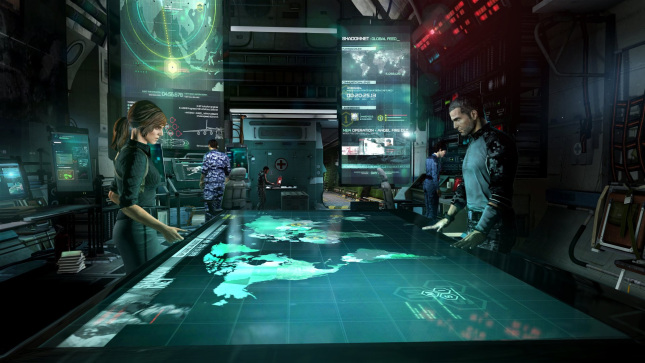 It’s a big week for Ubisoft Toronto, the French video game company’s newest studio, as it’s releasing its first game, Splinter Cell: Blacklist. The game has been under development for more than three years and, by most accounts, it’s been worth it - it’s got an 82 (out of 100) rating on review aggregator Metacritic.
It’s a big week for Ubisoft Toronto, the French video game company’s newest studio, as it’s releasing its first game, Splinter Cell: Blacklist. The game has been under development for more than three years and, by most accounts, it’s been worth it - it’s got an 82 (out of 100) rating on review aggregator Metacritic.
Over at the Globe and Mail, we gave the game - a highly polished and thoroughly engrossing action adventure - a nine out of ten. I was most impressed with how new Blacklist feels, even though it’s the sixth core entry in the franchise. Having had a further week to digest it, I’m also thinking it will end up being an influential game over time.
As I explained in my review, I very much liked how the developers made a relatively linear game - one that requires the player to move from point A to point B - feel like anything but. They did so by taking the traditional menu system found in many games, where players typically select between solo campaigns, multiplayer modes and co-operative missions, and incorporating it into the story itself.
It’s cleverly done, with protagonist Sam Fisher and the rest of his super-spy crew congregating around a “Strategic Mission Interface” tabletop aboard their mobile headquarters, a giant cargo plane called the Paladin. They discuss events around the SMI, then use it to get information and launch missions across all of the game modes. The characters, meanwhile, also double as menu functions. If the player wants to see his or her statistics, for example, they have Sam talk to his sidekick Isaac Briggs.
The result is that the menu invisibly becomes part of the game, where Fisher himself is the virtual selector of game modes and functions. It also blends the other play modes - multiplayer and co-op - into the single-player campaign, to the point where they’re not entirely distinguishable from each other.
In many games, I’ll play the solo mode first, then delve into co-op and multiplayer afterward. With Blacklist, I found myself postponing the main story in favour of the other options. That’s generally how an open-world game such as Grand Theft Auto or Assassin’s Creed works. Blacklist is a new experience in that it has upended the traditional Splinter Cell formula, which has generally been very linear, but also blurred the lines at least a little bit between open-world and linear games.
It’s smart and it works, and it got me thinking about games in general. If the medium’s differentiator from other entertainment options is supposed to be its interactivity and ability to let players make their own choices, Ubisoft Toronto’s approach strikes me as an inevitability for games that are otherwise limited in the choices they afford players.
As luck would have it, I had a conversation on this topic last week with someone close to the Call of Duty franchise. While the game is the pre-eminent first-person shooter on the market, its single-player story has traditionally been the epitome of linearity. Some reviewers (myself included) have likened it to riding a roller coaster - it’s a thrilling ride, but it’s on rails and there’s no player choice whatsoever.
I told this person that the franchise might benefit immensely from emulating what Ubisoft has done with Blacklist. Call of Duty’s main stories can remain linear, but cleverly blending the games’ various modes might do much to mask that overall feel. Plain old menus simply reinforce it.
Who knows if my advice will be taken. Game developers are generally a smart bunch though, so I suspect they’ll recognize a good idea - Blacklist‘s innovation in linearity - when they see it.

Marc Venot
August 22, 2013 at 1:41 am
From a test: “Wandering a bit, there is always a shortcut, an underground, a cornice or a ventilation grille that allows to avoid frontal attacks and preserve its infiltration.”